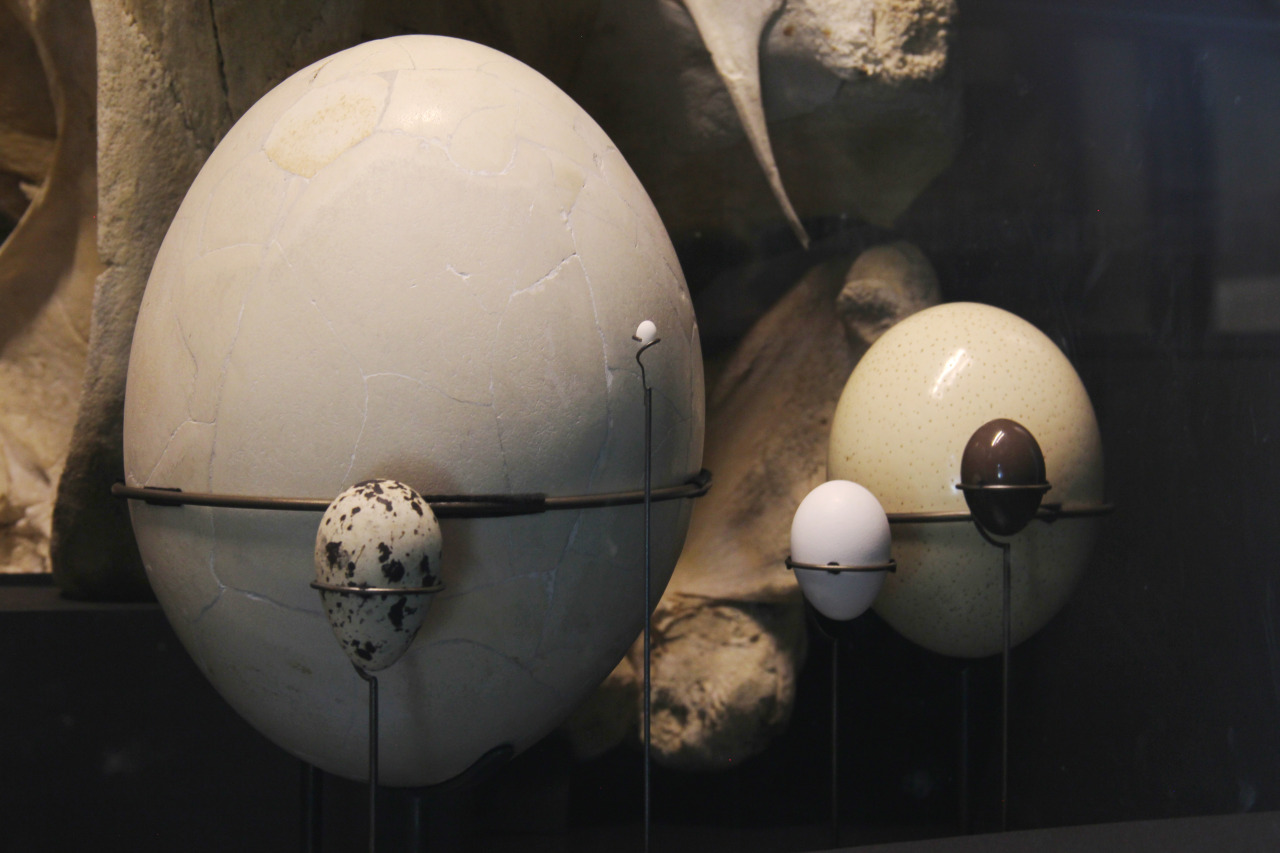“This display of egg shells makes me smile each time I see it. It is a clear physical demonstration of what I find so fascinating about evolution: that the process of ‘survival of the fittest’ leads not to one simple outcome but to diversity, here diversity in egg size.
The tiny egg is that of a hummingbird. After 2-3 weeks, a tiny hummer emerges from such eggs, weighing less than a dime.
The biggest egg is that of an elephant bird. The cracks in this shell give a clue that the egg shell was actually pieced back together. Elephant birds no longer exist — they went extinct ~300 years ago through over-hunting. Pieces of this egg shell were found in an old pile of food waste (a ‘midden’) and glued back together. Elephant birds lived on Madagascar and were about 3 meters tall and 500 pounds — look around, that’s about the size of the museum cabinets!
While elephant bird eggs are thought to be the largest bird eggs that ever evolved, their size is perhaps not so surprising: the moms were HUGE!! Ditto for small hummingbird eggs: their moms were TINY!! Perhaps the most surprising egg in the world is that of the kiwi. Poor kiwi moms, their eggs can be up to ¼ of their body weight, That would be like a human mom giving birth to a 15kg baby. Ouch!
Before leaving the topic of egg diversity, the shiny brown tinamou egg is also special. Tinamou eggs come in a variety of colours, depending on the exact species: green, blue, brown. The blue eggs of the great tinamou (Tinamus major) even seem to change colour and are iridescent! Much better than any of the eggs that we’ve ever dyed!
Why all this diversity? Certainly flightless birds, including elephant birds, ostriches, and kiwis, can carry heavier eggs because they don’t need to fly. But why so big, or so small, or so colourful? Scientists are still trying to figure out the exact details. But for now, we can look at this display and be reminded of the diversity of life that has evolved on earth.”
Dr. Sally Otto, Director of the Centre for Biodiversity Research at UBC.
